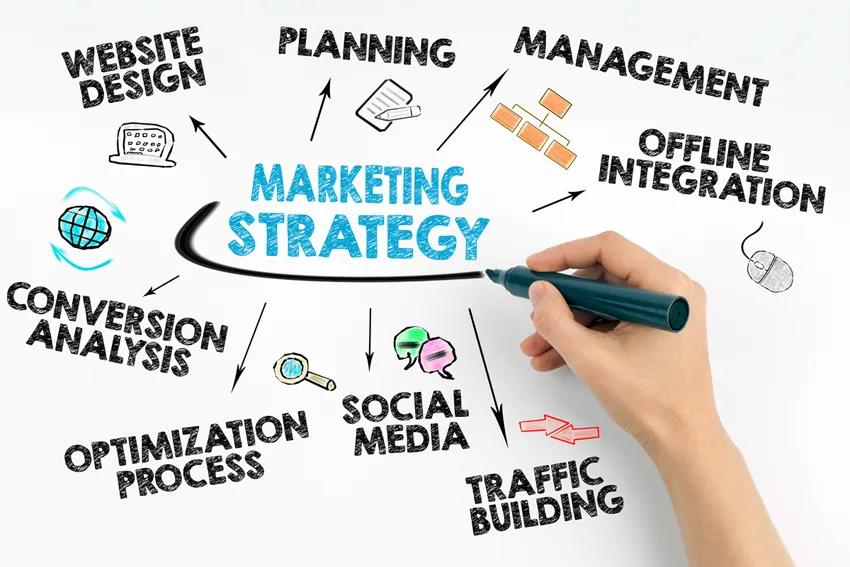On the surface, SEO’s role for B2B is simple: help generate sales. However, where SEO comes into play for sales impacts the SEO strategy.
Business-to-business is often discussed as if there is a monolithic go-to-market strategy that somehow applies to all B2B companies. Obviously, this isn’t the case. So, when we talk about SEO, we have to go beyond B2B and beyond the specific industry to understand the individual company’s sales process.
The Target Metrics For A Website
Websites are marketing tools. Like any other marketing tool, successfully developing and managing a site depends on defining its purpose/goal.
In general, we find that the website, and therefore SEO, plays a role in one or more of three areas.
Direct Online Sales
The easiest and most direct metric for a successful website is e-commerce revenue. When selling services, equipment, parts, or consumables online, we have a direct attribution to organic search.
Lead Generation
Lead generation is more commonly a target metric for B2B. While measuring leads and attributing them back to the sources is relatively straightforward, tying back the quality of these leads is less so. This becomes more challenging as the sales cycle becomes more complex.
Sales Support
This is more amorphous. For complex or longer-cycle sales processes, websites often become the go-to channel for prospects. Making sure content is easily accessible and discoverable or appears in Google search results when prospects continue with research can make or break a sale. While there is no hard metric for Sales Support, UX and SEO visibility play a key role.
The Purchase Process
What is the process from shopper to prospect to customer? For some industries, there may be a standard that applies to most companies, but that is not always the case. Two companies in the same industry may have different growth strategies. One may have an active Outbound Sales Team, while another may have a Product Lead Growth strategy. These involve two distinct buyer experiences even within one vertical.
Short-Cycle
From the time a customer identifies a need to the time the purchase is made, it can be a day or perhaps a few days. We often see this in parts and consumables. There is not a lot of research taking place. So, you have to make it to the shortlist quickly, identify and communicate the KSP immediately, and have a 1-3 day communication plan.
There is very likely an e-commerce component or a rapid response lead generation program. Once the transaction is complete, the buyer will unlikely visit the site again until another need arises.
Mid to Long-term Sales Cycles
Longer sales cycles tend to involve higher costs or longer-term commitments. They also involve more touch points, research, and a greater need for rich content. The website must support the communication coming to the customer during the sales process as well as support the prospect in providing information during their research.
At this point, there is another discussion on customer relationship management involved, which is beyond our scope here.
Key Content For Websites in B2B Sales
Knowing the target audience is vital to prioritizing and developing the website’s content. While all three of the following areas are important, their weight and focus on a site depend on the purchase process and sales strategy.
Product/service education
This can span the category or the company’s specific offerings. The website has to provide sufficient information to educate prospective customers and demonstrate a level of expertise to make prospects comfortable.
Company Authority
Higher costs and longer commitments come with more risk and require more support. But even with lower cost/commitment services, sellers must convey their authority and expertise in the marketplace to make it to a buyer’s shortlist. It is not enough to just describe products or services. The website must convey experience in the industry.
Company Trustworthiness
From transaction/information security to post-sale fulfillment, a website has to communicate trust. Verifiable customer reviews, a commitment to providing references, and real case studies are critical to establishing the trust needed to make it onto a prospect shortlist. It is not sufficient to simply list what a company sells; websites have to convey trust.
What about SEO for B2B Websites?
We didn’t forget. But SEO comes after all the above. While we work on SEO strategy, SEO is a tactic within the sales and marketing areas. So, first, all the above-mentioned needs to be figured out, and then search engines and how to structure content for them can be considered.
One challenge for digital agencies is when clients or prospects begin with SEO discussions (or digital marketing in general) prior to the marketing and sales strategy. We can work to get content to rank with search engine optimization, but if it is not the right content or not targeted to the right part of the sales funnel, then even page one ranking is not going to move the needle… well, maybe a little. But the point is that we must have the right goals in place for SEO to be effective.
Fortunately, we have been around long enough to help our clients lay the groundwork for a good digital marketing program, including SEO.

